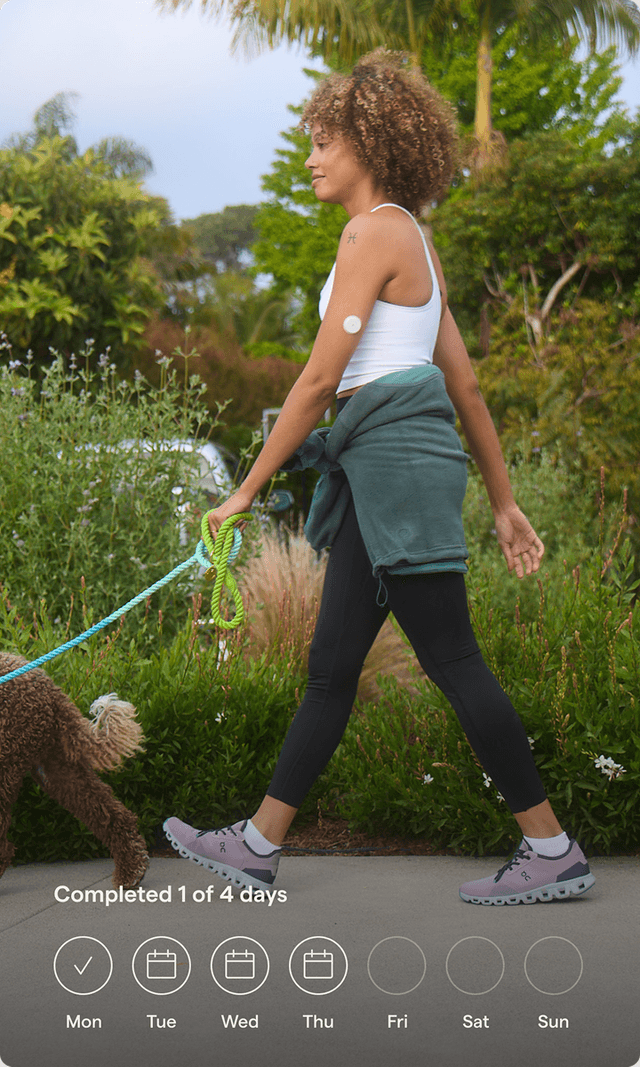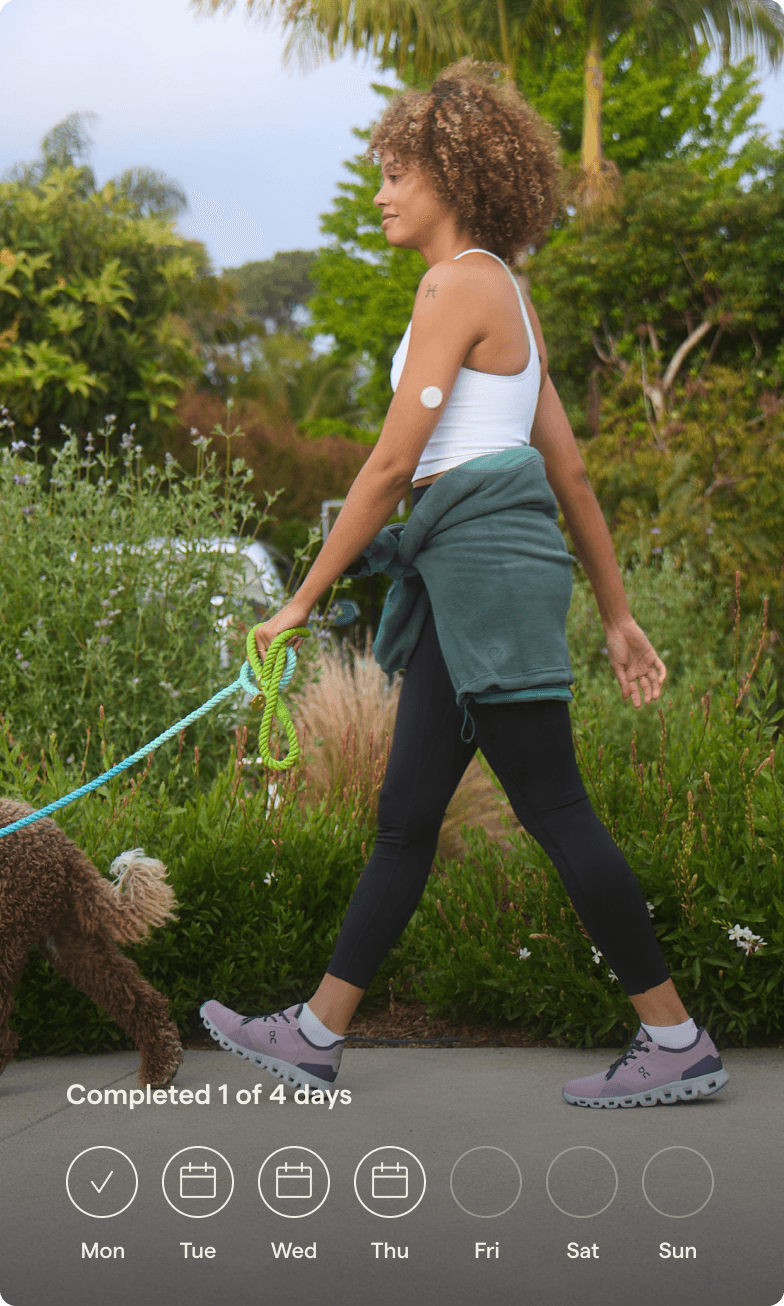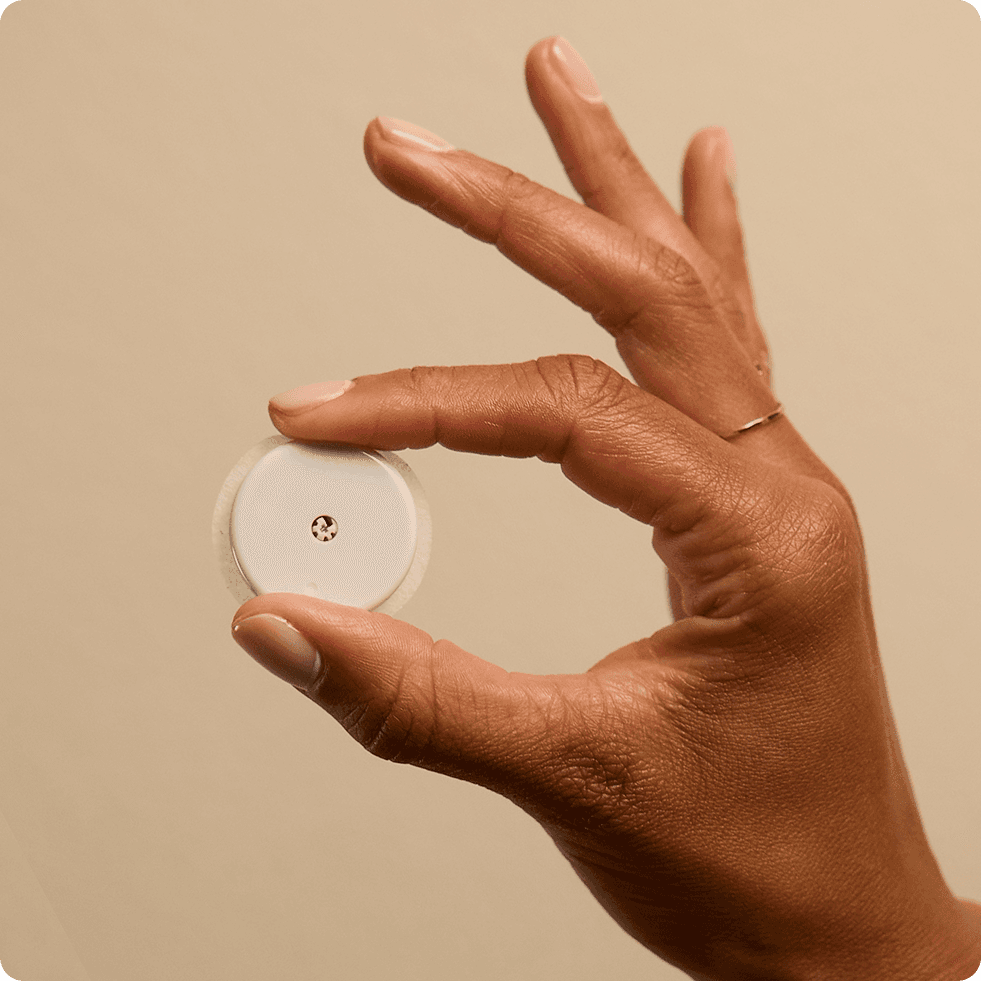Research has shown that diets don’t impact people equally.1 Our bodies process nutrients differently, plain and simple. Your biology is unique. Your approach to whole-body health should be, too.
ScienceThe Lingo experience


Apply your biosensor
The Lingo biosensor is a continuous glucose monitor (CGM). It attaches painlessly* to the back of your upper arm. Designed for comfort, you’ll forget it’s even there.


Get real-time glucose data
Your biosensor streams glucose data directly to your phone, so you can see the impact of your eating habits.


Connect with Apple Health
Sync with Apple Health to auto-log workouts in Lingo and see glucose data†† in Apple Health.


Learn new ways of eating
Discover which foods work for you and what to prioritise. Every person is different. Insights from Lingo help you know your body in a new way.


Turn insights into action
Armed with data and insights, you can build habits that support your goals. This is your body. Your data. Your health in your hands.


See your progress
Watch the impact of your new habits add up over time. Lingo provides daily, weekly, and monthly snapshots to keep you on track.
The biosensor
Know the impact of what you eat. The Lingo biosensor measures your personal glucose response to food and streams the data directly to your phone, 24/7.
The biosensor monitors your glucose via a tiny filament that sits just below the skin. Where some sensors refresh every 15 minutes, the Lingo biosensor streams real-time updates every minute of every day.



Discreet
You’ll forget it’s there.
Water-resistant
Sweat, swim, shower, repeat.
Lasts up to 14 days†
Put on a new sensor every 2 weeks.
No charging necessary
Streams continuously via Bluetooth®.
Your journey, our biosensor promise
We know that life with a biosensor on your arm takes some getting used to. Bumps and breaks can happen. Phones and apps can also disconnect. Whatever the reason — whether it’s your first or your fortieth — if your biosensor stops working before you’ve used it for 14 days, we’ll replace it.
The Lingo app
Wearing a biosensor is a strong start. But building healthy, consistent habits is the real goal. The Lingo app can help you see the connection between the foods you eat, your daily activity, and your glucose data — giving you insights you can use to create healthier habits over time. It’s also packed with science-backed tips and short reads on ways to improve your glucose patterns.
- A new view of you
- Follow your Lingo Count
- Log and learn
- Progress and insights
- Put habits to the test




See your glucose graph update throughout the day based on continuous readings from your biosensor.




Your Lingo Count translates your glucose spikes into one daily number. Lower counts over time are linked to better metabolic health.‡
‡ Data on file, Lingo by Abbott.




Log your meals, exercise, and more for even deeper insights. Discover new ways to improve your glucose patterns using these tried-and-true tips.




Weekly progress reports come with personal recommendations based on foods you log and how they affect your glucose.




Test new habits with science-backed challenges. Find what fits your lifestyle and start to build your healthiest routines.
What to expect on
your Lingo journey
Your first few days


An hour after applying your biosensor, your live glucose data will be up and running. Real numbers. Real time. Real you.
As your body reacts to different foods and activities, you’ll begin to spot patterns. A snack that spikes you. A walk that stabilises you. Some insights may even surprise you. We’ll send a report each week with all the details.
Your first few weeks


This phase is all about developing a deeper understanding of your body. By now, you can see how glucose spikes and dips affect your energy, focus, and hunger. You can begin to experiment with new habits and see how they affect your glucose patterns.
What you learn can help you manage your metabolic health intentionally — adopting new behaviours that keep you progressing week to week. Take a self-guided approach or join in-app challenges to help you reach your health goals.
Lingo, long-term


Your metabolic health isn’t set in stone — it’s something you can work to improve, over time. Lingo allows you to see and measure your progress, and more importantly, work towards building healthier habits.
Whole-body health is a lifelong endeavour. And the continued insights you get from Lingo are designed to help you make informed choices every day. Stick with it. Small changes can add up. The more you learn with Lingo, the better you can understand your body.
And if you decide to take a break, it’s worth checking in occasionally to see how your body has changed.
Start Lingo today
for just £59
Learn how your body responds to food and exercise with a 2-week plan*, no commitment.
- 1 Lingo biosensor with minute-by-minute continuous glucose tracking
- Full access to the Lingo app. Designed for iPhone 11 device or later.
Shop now
Free shipping
*No commitment. This plan does not auto-renew (requires an iPhone 11 or later)


FAQs
